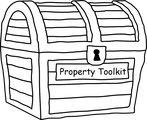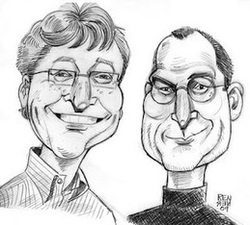 by Bradford Renner by Bradford Renner I’ve wanted a Mac Computer for the longest time. I perused Apple’s offering for the first time back in 2005 but one thing stopped me: the interface was very unfamiliar territory for me. At the time, the main tools I used were Word Processing (MS Word) and Number Processing (MS Excel). As a young intern at an investment bank my basic skills had been bumped up to a professional level. I was very comfortable in the world of Microsoft. I knew almost every option that was available to me not only using the slow-coach mouse method but also using the more rapid keyboard short cuts. The drop-down menus offered by Microsoft made exploring very easy. Ultimately, I decided that as pretty as I thought that Macs were, they were a step too far for me. In 2007, Microsoft released its new versions of Word and Excel. Gone were the drop-down menus with short cut prompts to lead you along. To use shortcuts, you had to have them already committed to memory from previous experience with the programs, the prompts were gone. I didn’t like the new interface and found it a little harder to use. Come 2010, the upgraded version is even worse than its 2007 cousin. The key issue: usability! Microsoft has changed its platform so drastically that it now makes sense to learn an entirely new operating system. The unfamiliarity that I felt with Macs is now also applicable to the key tools that I like to use on Microsoft computers. Importantly, Mac has now become firmly embedded in people’s minds as the computer of choice for creative types: video and picture editors, music creators and so forth. If you want to be considered serious about your technology you need to have a Mac. For the nth time today, I explored the idea of buying a Mac. I went to London’s flagship Apple store in Covent Garden and I am officially sold. I like to think of myself as a professional user of technology. Mac offer training very cheaply, Microsoft do not. This makes the prospect of plowing into Planet Mac so much less daunting and is definitely a plus. I did enjoy using PCs but like millions of serious techies, I am crossing the bridge to Mac. Microsoft laid the foundation for this decision, they changed their technology without breaking dedicated users in with courses, webinars or any other training. In Economics, demand is defined as want that must be backed up by the ability (money) and willingness to purchase a good. Want and willingness I have, now I just need to take care of ability: donations are welcome!
7 Comments
This blog was written a week ago and wasn’t meant to be posted until the weekend but something happened today that required that I post it right away. I explain the event at the end. When I first came to England I had never spent any time thinking about the concept of atheism. In fact, having never met an atheist I thought the term was a dictionary concept rather than anything that actually happened in practice. The first time someone told me that they didn’t believe in God I recall being appalled. I went from having a mild crush on the guy to thinking: I don’t really like you, for if you don’t believe in God you have got to be satanic. That moment was a turning point in my friendship with this guy because I don’t think I put very much into being friends with him after that. When he told me that he suffers from depression, I remember thinking that it was probably linked to his non-belief of a higher power! Being at the University of Cambridge, that was just the first of many encounters. Cambridge is a breeding ground for thinkers, people that question everything and from that moment on I met many atheists with the end result that I now understand and respect their view. I think it takes a lot more effort to not believe than it does to believe. Most of us were born within a certain religion. We were indoctrinated with it from a young age and have never thought to question it. A lot of introspection resulted from my meeting and questioning so many atheists. Every single atheist I know has a very sound moral code. In fact many behave better than some of my fellow Christians, I know that if I misbehave I can just go to confession and God will forgive. An atheist has to live with it in their conscience, they can’t pass the buck on to God. Upon looking at myself I accepted that: I have never known hunger. I have never known cold. I grew up in a two-parent home where I was loved and cared for. I have never known any real want. Mine has been a safe and sheltered existence and that in itself means I cannot judge those that have suffered in ways I can only imagine: Many people out there are going to bed without any food tonight. If such a person told me they didn’t believe in a God, how could I even begin to judge them negatively? There are many little boys and girls out there tonight being abused by the people that are supposed to protect them. A girl out there is zealous and enthusiastic about a trip she has been promised to a developed country where she can better herself – little does she know that she has just become someone’s drug mule or sex slave. I watched a program a couple of weeks ago where a woman was being forced by her husband to sleep with other men for money; he beat her if she refused. Some punters came to her house at lunch time, her husband made her cook lunch for all of them, he then accepted some money and she had to a go to a room to let the man do his business. She described herself as being “the unluckiest woman in the world”. “What could be worse than this?” she asked the journalist. Indeed, what could? I for one could only weep as I watched the injustice unfold. 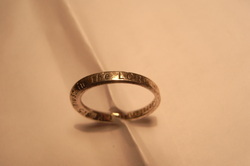 So, what ominous event happened today? Sometimes events call one to question whether God does truly exist and today was one such day for me. My sister’s Facebook status update in the morning said something about God always knowing what was going to happen in advance of its occurrence and as such we should trust him. Cynically, I thought, “Does he know in advance when a helpless five year old child is going to be molested by those that should be trusted?” Watch enough episodes of Law and Order: SVU and you too will think in these mysterious ways. Anyway, the very thought made me begin to question God’s existence. When I got home from work I decided to do a patch of housework, I very rarely do housework during the week, I save it for the weekend. I would say this event occurs but once a month, if that (my husband says once a year!) As I was cleaning I decided to clean out a compartment of my tumble dryer that’s supposed to be cleaned once every three to six months – it hadn’t been cleared in at least a year. On the second scoop out of the gunk, I found a ring that belongs to neither me nor my husband; a guest must have forgotten it. It reads: Trust in the LORD with all your heart and lean not on your own understanding Pr 3:5. I was spooked! Can a question be more directly answered?
How about cycling? If you get on your bike and cycle at 10 mph for 45 minutes (that’s 7.5 miles) you’ve burnt 300 calories. That’s the equivalent of cycling 3.25 miles and back. ...and spinning? If you are doing a Spinning class, you can burn 300 calories in a 30 minute session. What about Step Aerobics? Using a 6-8 inch step you can burn 300 calories in 1 hour. What about Zumba? You can burn 300 calories in a 45 minute Zumba class Skipping? You have to skip for 20 minutes to burn off 300 calories. Swimming laps at a moderate pace? To burn 300 calories, you should swim for 30 minutes. This assumes a moderate (not leisurely) pace. Rowing machine (vigorous effort)? Working at a high resistance, going as hard as possible, you would still need to spend 30 minutes on the rowing machine to get rid of those mars bar calories! No Quick Fix There is no quick and easy way to burn calories. So next time you tuck into your 4th donut, ask yourself, “Am I ready to spend the next 2 hours in the gym?!” 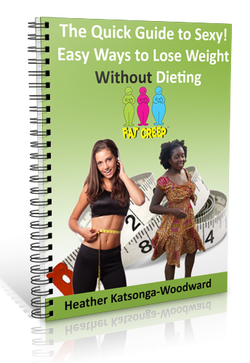 Although your personal finances and your business success are my primary interest, I believe you only operate at peak efficiency when you're fit and healthy. If you feel good, it filters through to your work. To help you with that, click for your free ebook: The Quick Guide to Sexy 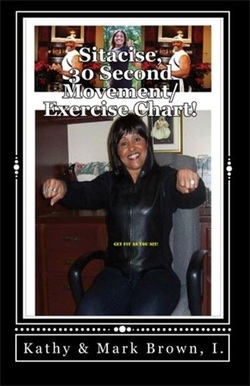 What Happened to Heavy D, David Bloom, Serena Williams and Cathleen Renner Can Happen to You by Mark and Kathy Brown Yearly, over 2 million Americans get deep vein thrombosis (DVT), which are blood clots usually in the deep veins of the thighs or calves like Heavy D, David Bloom, Serena and Cathleen. And just like Heavy D, David and Cathleen 300,000 of them die from this very preventable disease. During DVT Awareness Month, Sitacise is on a mission to educate students, teachers, call center workers, truck drivers, bus drivers and others that idly sit on how to prevent DVT and Pulmonary Embolism (PE). A pulmonary embolism happens when the blood clot breaks off and flows through the vein, up to the heart and into the lungs and lodges there and blocks the blood flow and can cause sudden injury or sudden death. Serena was lucky and hers was caught in time but Heavy D, David Bloom and Cathleen were not as fortunate and they were killed by DVT/PE. Cathleen was working at her desk when the clot formed according to her doctors. But how did the clot form and what can we do to prevent them from forming? Unlike arteries, which rely on the heart to force blood through them, the veins transport blood with the help of muscle contractions while we move and walk. Veins also have valves that keep blood from flowing backward and pooling in your arms and legs. When we are inactive for an extended period our venous circulation slows down; as a result clotting factors in the blood cause the slow moving blood to clump together forming a blood clot or thrombus. This is how Cathleen got DVT from idle sitting. Sitacise has developed a series of movements and exercises that can be done while we’re sitting that will contract the muscles to help transport the blood through our veins. This will prevent idle sitting that causes DVT and PE. Sitacise has also been found to help reduce the other risks associated with idle sitting such as diabetes, obesity, cancers, heart disease and some back and leg problems. Sitacise offers a large range of products at www.sitacise.com, such as the 30 second movement/exercise chart book that has been called the manual for all who have to sit. Sitacise also has available at www.sitacise.com The Sit & Get Fit DVDs that show more movements to help prevent and treat DVT and the other diseases. Sitacise is the global leader for in-the-chair, couch, seat, office or cubicle movement/exercise/fitness and health solutions. All products can be downloaded to your PC, Mac, iPod, iPad, Kindle or other device for immediate use. Mark and Kathy are master level and certified trainers that have trained with Olympic Gold medallists, pro-ball players, body-builders and boxers. They have written books and developed and created fitness programs and DVDs. Click here to email Mark and Cathy Brown for speaking engagements or further information. 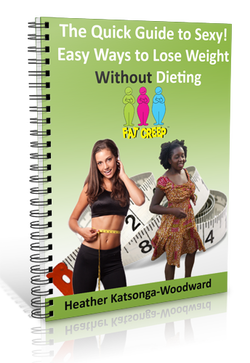 Although your personal finances and your business success are my primary interest, I believe you only operate at peak efficiency when you're fit and healthy. If you feel good, it filters through to your work. To help you with that, click for your free ebook: The Quick Guide to Sexy 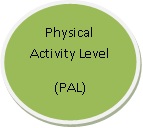 By Dr Harry The amount of calories you consume each day should be between 2,000 and 2,500 kcal on average. But these are average values based on average activity levels. We can judge our own Physical Activity Level (PAL) according to the kind of activity we do in our daily lives. From this we can get a more accurate guide to our daily calorie intake suited to our specific lifestyle.
What affects PAL? Your PAL depends on several factors – like your line of work, your daily journey to work, and the amount of time you have to partake in exercise. Some of those you have a choice about and others you don’t. Sedentary Most of us can’t change our job. If you work behind a desk – answering phones, typing reports etc. – it is very difficult to burn extra calories during working hours. And most of us spend most of our time at work, so it’s a big problem. If you fall into this category your PAL would be classed as "sedentary" or your lifestyle would be described as “light activity”. You would also typically take the car to work, spend your leisure time reading, chatting, watching TV, listening to radio or computing. Does this sound like you? It sounds familiar to most people as that is the way of modern life in most modern cities. Active Obviously if you are a job where you are on your feet all day, e.g. waiting tables, or doing light manual work, e.g. stacking shelves, your activity levels will be greater. Your PAL would be categorised as "active" or your lifestyle would be described as “moderately active”. You may not be obliged to be that physically active at work, but you may get your activity by cycling to work or walking part of the journey there. In your spare time you take the opportunity to exercise – at least one hour per day. Vigorous The people with the most active jobs – like dancers, swimmers, or in the developing world farmers who toil on the land – will be in the PAL category “vigorous” or their lifestyle would be called “vigorously active”. Vigorous physical exercise of 2 hours per day, or manual labour for several hours per day, or walking long distances carrying heavy loads, walking on rugged terrain (if you are in the developing world) would also classify as vigorous activity. How does my PAL affect the amount of calories I eat every day? There is a simple relationship between your PAL and your Basal metabolic Rate (BMR) and the total amount of calories you should eat per day to maintain a stable weight. Use the PAL value below, which depends on your lifestyle: In a previous blog we discussed basal metabolic rate (BMR), and how to calculate this based on your age, height, weight and sex. Once you have an estimate of your BMR you can use your PAL value to work out how much energy you should be consuming on a daily basis. Let’s imagine we have calculated our BMR as 1560 kcal/day. And, let’s say that we are moderately active. This gives you a PAL value of 1.70 – 1.99. Let’s say 1.8. Knowing these two figures we can work out our recommended daily calorie intake: 1560 x 1.8 = 2809 kcal per day. This means if I consume 2809 kcal per day I will maintain a stable weight. This assumes that I don’t need any extra energy for growth, which is a safe assumption for adults but would be inaccurate for growing children and I keep my PAL as “active”. During the winter, when it’s colder and darker outside, I may become “sedentary” and therefore my recommended daily calorie intake should be modified – otherwise I will gain weight over the winter months! 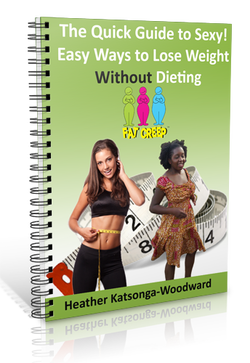 Although your personal finances and your business success are my primary interest, I believe you only operate at peak efficiency when you're fit and healthy. If you feel good, it filters through to your work. To help you with that, click for your free ebook: The Quick Guide to Sexy The Business 2012 conference at the O2 Arena in London was an enjoyable and entertaining event but one speaker stood out amongst the multitude.
Business 2012 was designed to be a showcase of support services for business. All the stands were resources that a business needs: printing services, understanding copyright law and the tax system and the most popular one this year: how to use internet marketing (IM). I was primarily interested in internet marketing because there is a fair amount you can do for free. I enjoyed a talk by two guys from Video Results that added a different spin to the usual chatter about internet marketing. I saw two speakers (Simon Coulson and Nigel Botterill) each of whom had become millionaires via an internet business and following their internet success were now making more mula with ‘how to do it’ courses. Success breeds success. Invariably, at the end of each seminar, the speaker would offer a “great” deal on their coaching services with a view to sucking in a few customers. I’m a hard sell: I didn’t buy anything; I got as much free info as I could, took their website addresses and decided I would just learn from watching. Importantly, I don’t have a few grand lying around to spend on courses! Write a book and I’ll buy it. Anyhow, one guy I went to impressed me the most because he completely ignored IM and talked about the effectiveness of old-school marketing. He said he hates employment because he finds having to fill out a form when he wants to go on holiday a most offensive corporate requirement. He prefers to swan off without having to ask. What I learnt from Nick Davies: The beauty of email is also its shortfall. Lots of people bash out emails because they are so easy. So when he started a business a few years ago he made a list of his target corporate clients and started making phone calls with a view to meeting up. Attractive letters If he couldn’t get hold of someone by phone to arrange a meeting, he wrote a letter. Nowadays people receive a lot less physical mail than was the case in the past so it may well be worth buying an attractive package and sending a letter and a sample to prospective buyers or distributors. The MAN However, don’t just make calls and blast letters out willy nilly! Try your best to figure out who the MAN is. That is the person with the Money, Authority and the Need (they don't have to be male!). Every organization has a person who has been entrusted with decision making power. Your sales pitch will be much more effective if you can find them. It’s a bit annoying to buy tea and biscuits for Suzy, and then to have her say “I’ll have to speak to Jane about this, Jane makes all decisions regarding [blah]”! You should have been speaking to Jane in the first place. Of course if Jane trusts Suzy and you really impressed Suzy then it’s not a complete waste – except you’ll probably have to come back and re-pitch to Jane. So, in all endeavours, as you try to build up a business don’t forget about traditional marketing and that your quest for sales is a quest for the MAN! 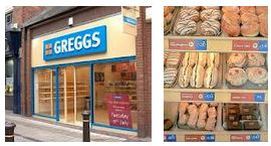 by Juliet Tyson I went through the whole weight loss experience about 2 and half years ago when I lost 13-15kilos. I went from 70kilos (11 stone) to 55-57 kilos (about 9 stone). I had always been on the chubbier side at school and although I tried hard I wasn’t the sporty type. I also have quite a curvy figure so I never really noticed when my bust got bigger and my bum got rounder. This was when I initially tried a serious diet. The exact moment was the cliché celeb excuse, looking back at holiday pictures and wondering when my body had changed so drastically. Anyway, I digress a little. When I decided to try Fat Creep™ I noticed my weight had gone up to 64kilos. I was just under 10 stone and I panicked because my goal since I had lost the weight initially was to remain between 57 and 60 kilos. I liked Fat Creep™’s idea of a “happy weight range” that is based on B.M.I. but also on what an individual feels comfortable with. This is one of the aspects of weight loss that I find fascinating. It is not just simply “lose Y amount of pounds to be weight X”. The journey is wrapped up in your self image, your background, and even your emotional relationship with food. I am not in any way, shape or form an expert when it comes to psychology but having spent a long time experiencing the transformation that comes with shedding the pounds I‘ve noted some strange, interesting and even scary thought processes. I will be totally honest I cheated a little on Fat Creep™. I didn’t record my weight for 2 weeks because it just would not budge. I was eating healthily, going to the gym, and all that but I was stuck at 63.5. Then last week, I decided to weigh myself and I was overjoyed to discover that I was down to 61.3 kilos! (9st9lbs). I was standing on the scale in boots and it took all of my will power to not jump around dancing with happiness and relief. This is a feeling that I am all too familiar with. On the one hand, the ecstasy of losing some weight; on the other end of the scale, the frustration of gaining weight. I agree that weighing yourself once a week is a good idea. Your weight can fluctuate very easily from day to day and when you are trying to lose weight steadily it can take a while to notice the difference. I used to have a digital scale in my flat and I am glad I don’t have one anymore as I remember weighing myself sometimes more than once a day! As I write this, I realise that sounds quite extreme but the point I am trying to make is that embarking on a serious weight loss journey requires 100% commitment but the downside is that you can become easily obsessed. Even if, like me you have a life that is quite fairly balanced between work and family commitments it is surprisingly easy to get caught up too much in yourself. Dare I say, forgetting the needs of others around you. It would appear that a prevalent idea in society is that in order to achieve your weight loss goals, you need to suffer and deny yourself almost every type of enjoyable food that you need to punish your body into submission at the gym. There is no doubt that you need to realistically give up a few things for a while (Mine is Greggs!). Once I lost that initial 2.4 kilos (after the frustration of nothing moving for 3 weeks) I had to remind myself that the best way is not a quick fix. It’s a slow journey and your greatest weapons will be patience and persistence. Give yourself a small reward once again. Buy yourself a new dress even if you plan to out shrink it. The happier you are the more motivated you will feel and your family and friends will surely benefit too. 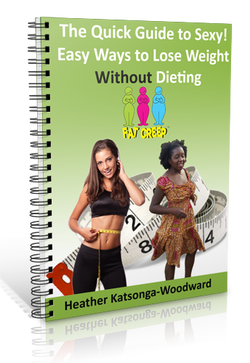 Although your personal finances and your business success are my primary interest, I believe you only operate at peak efficiency when you're fit and healthy. If you feel good, it filters through to your work. To help you with that, click for your free ebook: The Quick Guide to Sexy 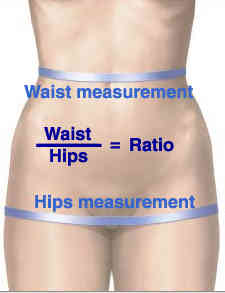 By Dr Harry We all have different body shapes, and our own body shape can change over time. This blog takes a look at how we can measure body shape using two metrics (the waist to hip ratio and waist circumference) and what these mean for your health. WAIST TO HIP RATIO This is a comparison of the waist’s circumference compared to the hips’. You may have heard about people being described as having an “apple” or “pear” shaped body. This is a simple way of thinking about waist to hip ratios (WHR). The significance of this is related to the health effects your body shape can have. An apple shape is linked to diseases such as diabetes, heart disease and shortened life expectancy. This is because the fat distribution is focused on the center of the body (and is termed central adiposity), around vital organs. Pear-shaped bodies have a different distribution of fat – around the buttocks and thighs. This is far away from the vital organs and is not associated with poor health outcomes. How can I check my body shape? To check your own measurements all you need is a tape measure! For measuring your waist, look at where your stomach looks the narrowest. If you can’t tell where this is (most people can’t!), measure just above your belly button around the stomach. To measure your hips, look at the area which sticks out the most around the buttock-area and measure around there. Then divide the first measurement by the second measurement.  Pear If you are a “pear” you have a narrow waist with wide hips.
Another way of saying this is that a “pear” shaped person has more weight below the waist. 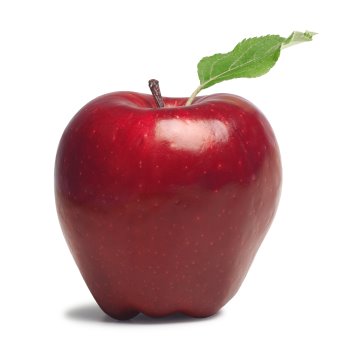 Apple If you have an “apple” shape your waist is less defined and you have more weight above the waist than a “pear” shaped body.
E.g. 32 inches (waist) / 34 inches (hip) = 0.88 In some cases the ratio is more than 1. This occurs when the waist is rather much larger than the hip measurement and is commonly seen with a “beer gut”. E.g. 38 inches (waist) / 34 inches (hip) = 1.4 What does the number mean? A high number ultimately means that you are at an increased risk of ill-health from diabetes and cardiovascular disease.
Note at levels of BMI of 35 or more, waist circumference does not add any further information (you are already high risk!) With a healthy BMI (18.50 – 24.99) an increased waist circumference does increase the risk of health problems. And if you already have obesity related complications, like diabetes or heart disease (e.g. angina) you should be seeing your healthcare provider about getting help with your obesity no matter what your waist circumference. 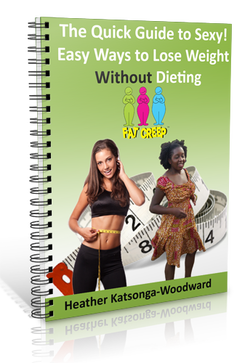 Although your personal finances and your business success are my primary interest, I believe you only operate at peak efficiency when you're fit and healthy. If you feel good, it filters through to your work. To help you with that, click for your free ebook: The Quick Guide to Sexy 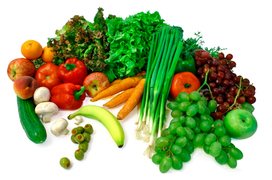 By Dr Harry This is a bit of a mouthful, but let me break it down one word at a time. “Basal” means baseline or minimum. “Metabolic” refers to all the chemical reactions going on in your body which keep you alive. For example, heart beating, lungs breathing, brain thinking, stomach digesting and so on. “Rate” is to do with measurement of time. This is usually per minute, per hour or day, but it could be calculated for any time period. So the Basal Metabolic Rate is the baseline, or minimum, energy your body needs to carry out all the vital functions to keep you alive every day. Remember that whenever people measure things, they want to make sure other people measure in the same way so all the results can be compared properly. So there are standard rules for measuring the Basal Metabolic Rate. These are:
You may have guessed that not everyone will have the same BMR because everyone is different in terms of their body size. The following factors will affect BMR. Body composition. Muscle needs more energy to function than fat. So a more muscular person will have a higher BMR than someone with less muscle. Age. Basal metabolic rate in children is higher, because of the energy needs (for growth). As we get older and stop growing, BMR decreases. Gender. BMR is higher in men than in women, since men have a higher amount of muscle and muscle needs more energy to function than fat. Body size. A tall person has a higher BMR than a short person. BMR for the average, healthy adult is usually between 1,200 and 1,800 kilocalories (kcal) per day. Since the guideline daily amount of energy intake is only around 2000 kcal (for women) and 2500 kcal (for men) you can see that BMR accounts for the majority of a person’s daily energy requirement. To calculate the basal metabolic rate (measured in kcal per day) use the formula Women: {9.99 × weight (kg)} + {6.25 × height (cm)} – {4.92 × age (years)} – 161 Men: {9.99 × weight (kg)} + {6.25 × height (cm)} – {4.92 × age (years)} + 5 So for a 23 year-old woman who is 163cm (5’ 5”) weighing 65kg (143 lbs) her Basal Metabolic Rate is: (9.99 x 65) + (6.25 x 163) – (4.92 x 23) – 161 = 1394 kcal/day. We have prepared a calculation spreadsheet for you. Download, save and use!
What does the BMR number tell you? Well, most people do more than just rest in a day. So the more active you are the higher your metabolic rate. If you are trying to lose weight, a calorie intake exactly equal to your BMR would mean that your consumption is exceeded by what you are burning in a day and weight loss will follow. The more active you are the higher this difference will be and the faster you will lose weight. 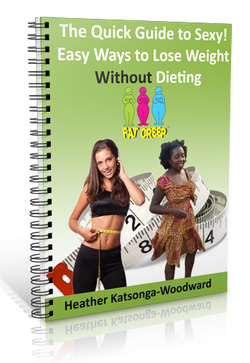 Although your personal finances and your business success are my primary interest, I believe you only operate at peak efficiency when you're fit and healthy. If you feel good, it filters through to your work. To help you with that, click for your free ebook: The Quick Guide to Sexy  Book stack from: funfacts.com.au Book stack from: funfacts.com.au Read this article first. “The death of publishing is greatly exaggerated. We will still need publishers as long as we read books, just as we still need critics to review those books. It is part of the great filtering process of literature and culture.” Sebastian Shakespeare I think this article misses three key points: Self-published does not mean self-edited I wrote my first novel in 2010. I haven’t yet published it but I wrote it for the sake of writing it. I wanted to produce a thought-provoking, well written story and upon completion I submitted the work to a professional editor who read the work, edited it and gave me an 8-paged critique. Everyone knows that poorly written work won’t sell and you will find that many self-published works have been edited professionally. Self publishers aren’t going the DIY route because they can’t find a publisher I can think of at least three reasons that one might choose to side-step the traditional route. Ease – the publishing industry makes getting your work even read very difficult. This, in part, is because they are inundated with manuscripts. To help them sort through the stuff publishers prefer submissions channelled via an “agent” and this long chain is frankly off putting. Self-publishing requires a little technical know-how and you’re up and away. Many gen-Ys are super confident with technology and will choose the quick and easy way if they can’t be convinced that there is a real benefit in choosing the more treacherous path. Control – the publisher, being the ‘fountain of knowledge’ that she is on themes that are commercially viable and those that are not can exert so much control over a piece of work that you ultimately don’t even recognise it as yours. Or have to make too many compromises. Some people prefer having more control rather than less and self-publishing provides that. Income – a traditional publisher will typically give you 5-10% of profits. Self-publishing can yield up to a 70% share. Publishers might argue that you are getting a smaller piece of a larger pie but why should you be happy with that. If you have done a piece of work you should get most of the reward. Reviewers not publishers or professional literary critics “sort the wheat from the chaff” We live in a world of reviews. I understand that most readers are women especially when it comes to fiction. They base a good portion of what they read on recommendations from friends. Failing that, reviews from every day people help us decide what to read next. If a literary critic rates a book highly but on Amazon the majority of readers rate it 1 out 5, that book won’t do well. The review system adds democracy to the process and is now key in sorting through the immense variety we face in this age of mass consumption. You will frequently see comments like “I wish I had read the reviews before buying this book, it was a total and utter waste of time…” That is the power of reviews. I read reviews before every single purchase now, I seldom bother going to the shops especially when the weather is poor. Every electronic gadget I have (except my digicam) was purchased online. And in the case of the digicam I used online prices to squeeze the price down. No one reads a book because it was published by such and such a publisher People have favourite authors. Once an author is established they will have a dedicated following that will read their output regardless of how it is published. This is why you are finding traditionally published authors going the DIY route. Is publishing dead? No, I don’t think so but they are going to have to change their formulae especially when it comes to the income share. Their magical powers of distribution have been taken by technology so they will have to find relevance in another format. I tweet @GirlBanker |
By Heather
|
||||||||||||||||
Heather Katsonga-Woodward, a massive personal finance fanatic.
** All views expressed are my own and not those of any employer, past or present. ** Please get professional advice before re-arranging your personal finances.



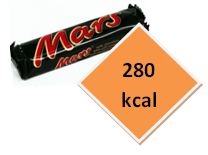
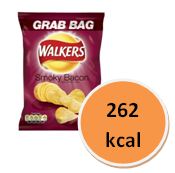
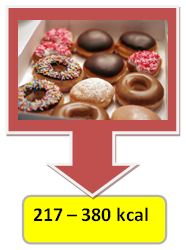
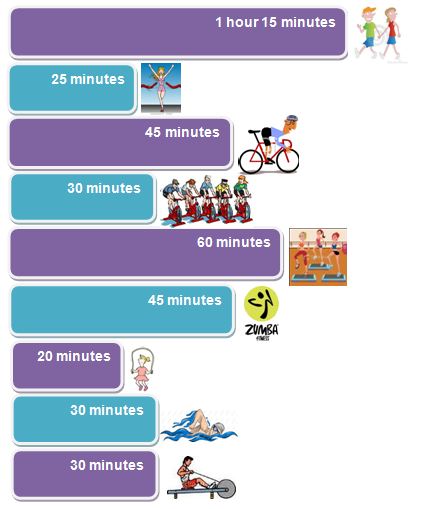
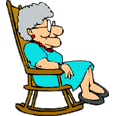
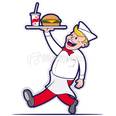
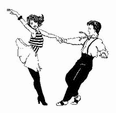



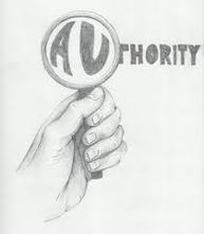
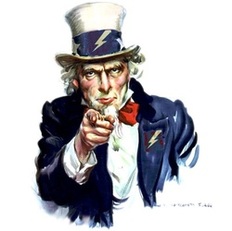

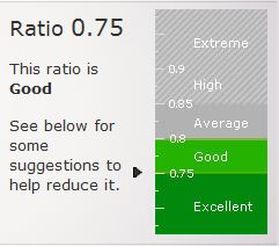
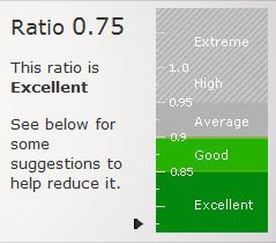


 RSS Feed
RSS Feed
